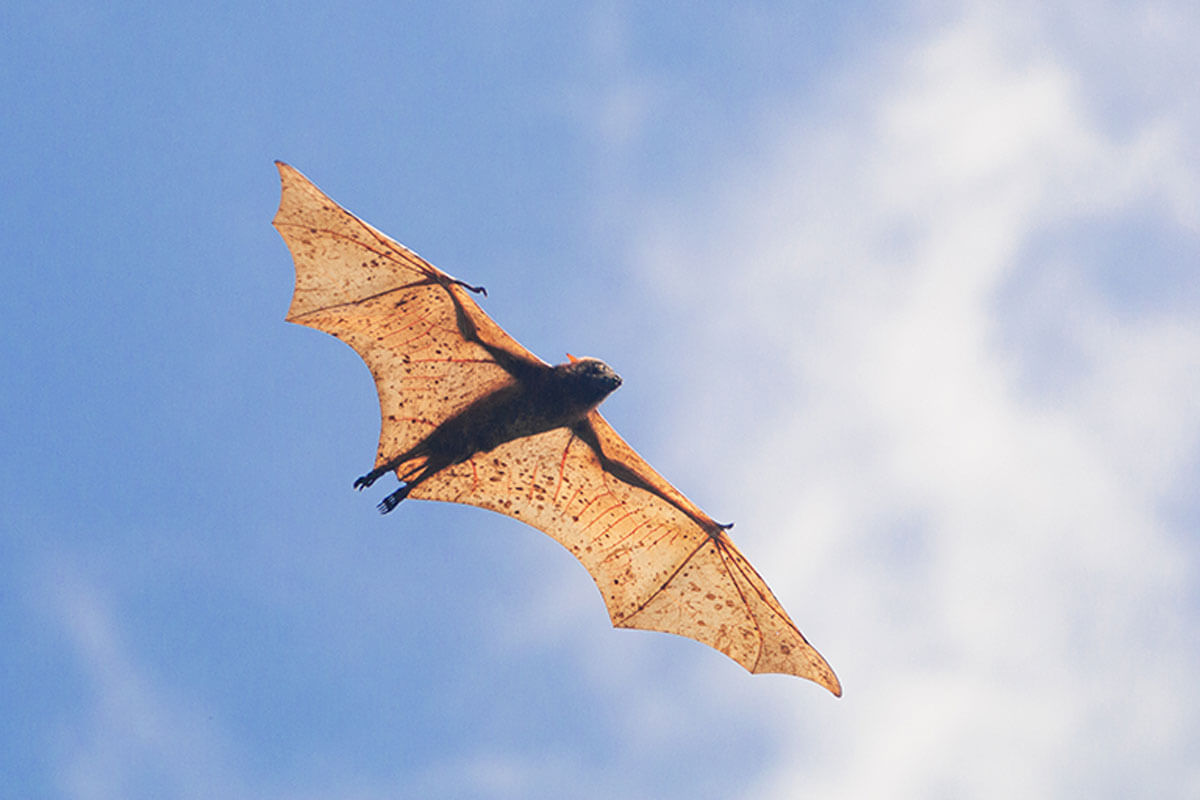The Giant Golden-Crowned Flying Fox, the World's Largest Pollinator

A species of bat is the world’s largest pollinator and a great seed disperser. Its scientific name is Acerodon jubatus and yet it’s known as a “flying fox”. It feeds on fruits and is an endangered species.
They’re called foxes because physically they have some similar features. Read on and find out all the details about this little animal.
What does this bat look like?

Like other bats in the Pteropodidae family, the giant golden-crowned flying fox has large, bright eyes and relatively simple external ears with continuous margins. There is considerable variation in color. However, the typical scheme is dark brown or black on the forehead and sides of the head, reddish brown on the shoulders, and dark brown or black on the lower back.
These animals can grow up to 1.5 meters (5 feet) tall, weigh approximately 1.2 kilograms (2.6 pounds) and in one night can travel up to forty kilometers. They love to live near water, and it is said that, when they fly, they descend and collect water in their wings, which they use for cleaning and brushing themselves. This is one of the curiosities of the species.
The diet of the flying fox
These animals feed entirely on fruits (frugivores). In the treetops at dusk, several of them gather to eat figs and other fruits. For farmers, these bats are of vital importance. Why? Because they consider them to be the silent sowers, because they distribute the seeds in the area, they kill pests and all this is very important for the regeneration of natural contexts. A fact to highlight is that out of all the 1300 species of bats that exist, only three feed on blood.

Protection for the flying fox
Currently, as mentioned above, this species is in danger of extinction due to indiscriminate and large-scale hunting and logging in the region, which causes the destruction of its habitat.
For this reason, different associations are focusing on its protection and on carrying out activities for the conservation of the species. In captivity they are developing programs for the breeding of this species to avoid its extinction.
All cited sources were thoroughly reviewed by our team to ensure their quality, reliability, currency, and validity. The bibliography of this article was considered reliable and of academic or scientific accuracy.
- Mildenstein, T.; Stier, S.; Nuevodiego, C. y Mills; L. (2005). «Habitat selection of endangered and endemic large flying-foxes in Subic Bay, Philippines». Biological Conservation (en inglés) 126: 93-102. doi:10.1016/j.biocon.2005.05.001
- Rabor, D. S. (1986). Guide to Philippine Flora and Fauna (en inglés). Natural Resources Management Centre, Ministry of Natural Resources and University of the Philippines.
This text is provided for informational purposes only and does not replace consultation with a professional. If in doubt, consult your specialist.